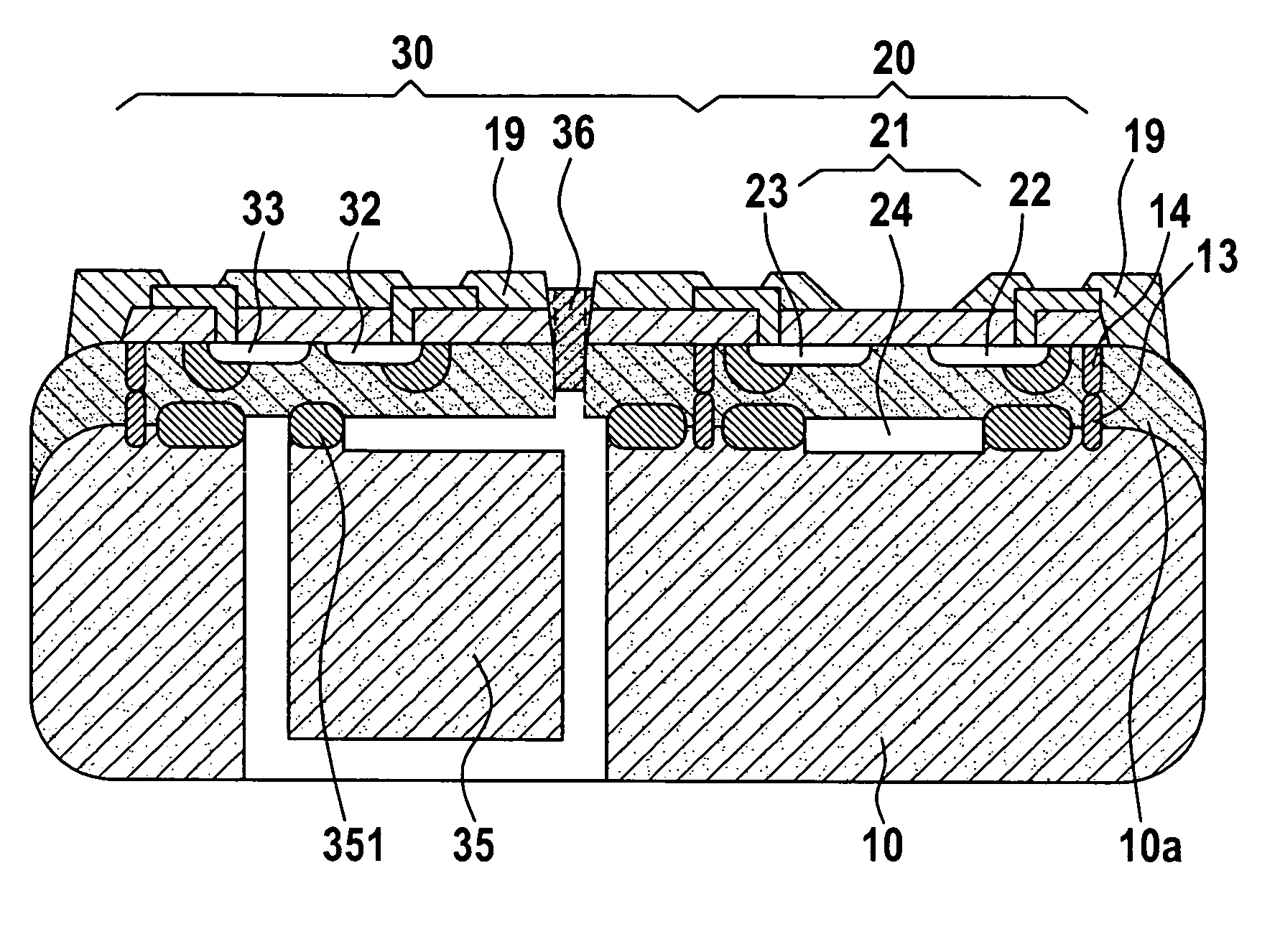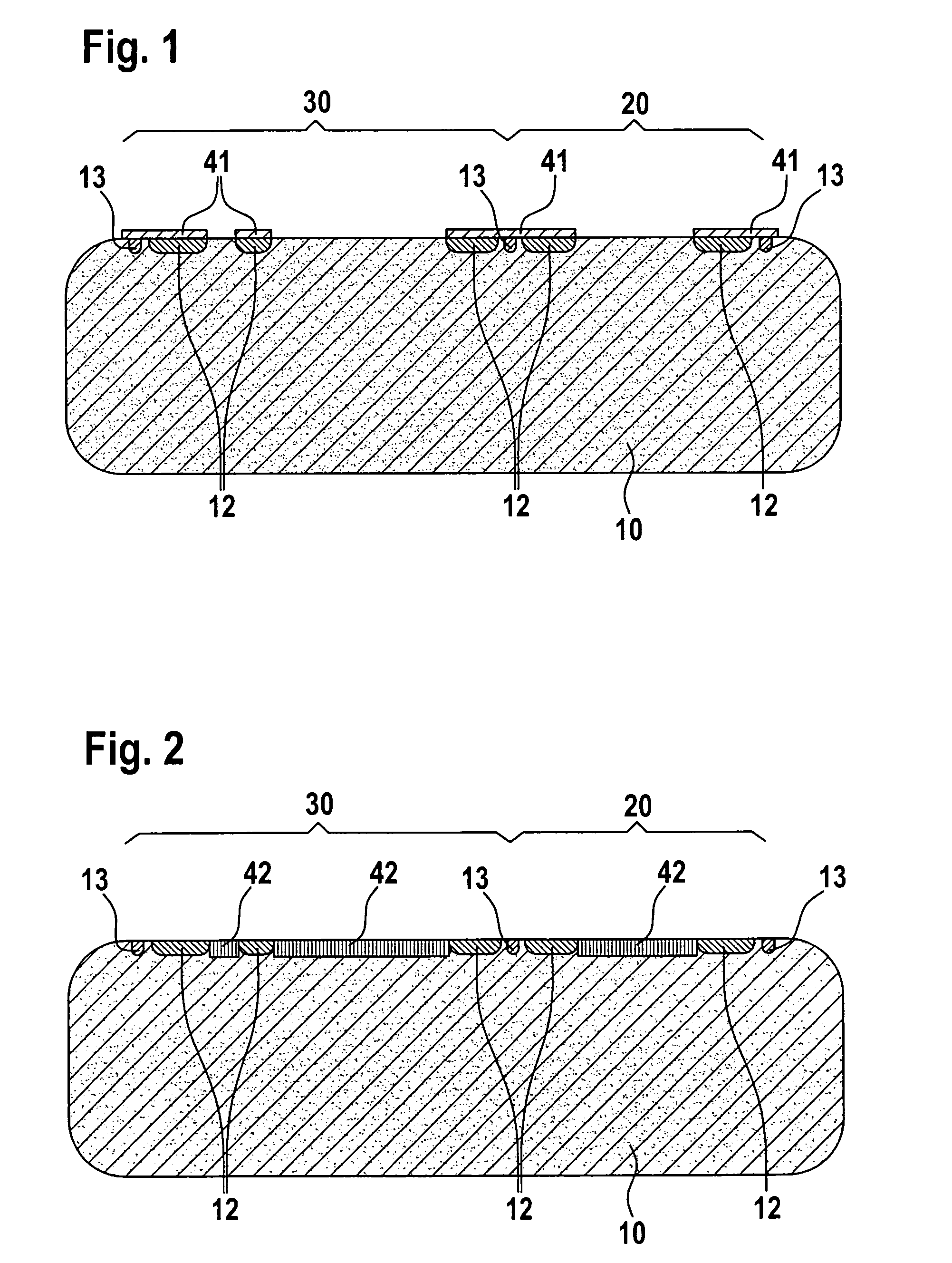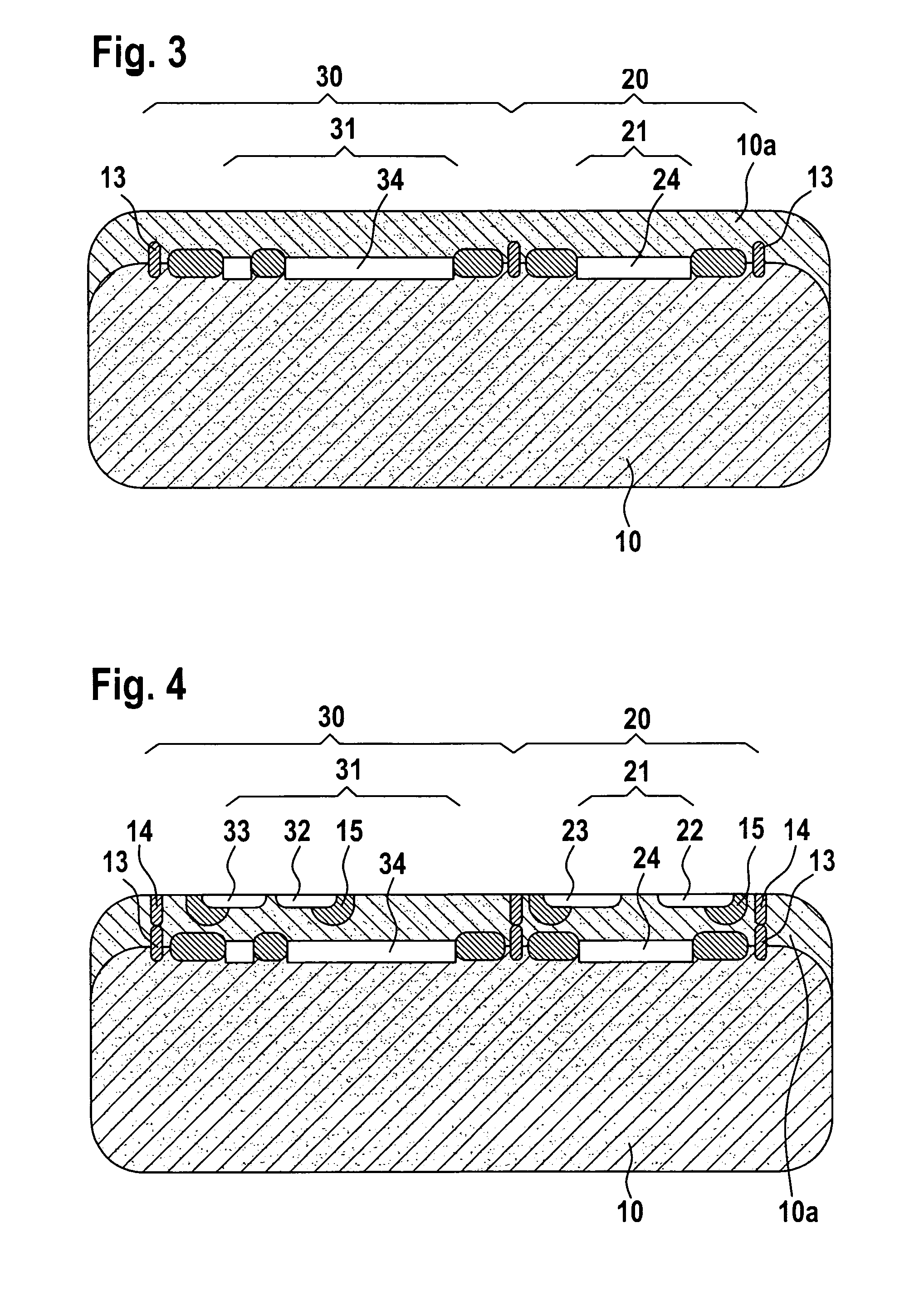Micromechanical device having two sensor patterns
a micromechanical and sensor pattern technology, applied in the direction of measuring devices, fluid pressure measurement by mechanical elements, instruments, etc., can solve the problems of multi-sensor requirements, inability to represent on one chip in a monolithically integrated manner, and relatively high cost of multi-chip applications, so as to reduce the cost and the required space, improve the functionality, and reduce the effect of connection paths
- Summary
- Abstract
- Description
- Claims
- Application Information
AI Technical Summary
Benefits of technology
Problems solved by technology
Method used
Image
Examples
Embodiment Construction
[0012]FIG. 1 shows a first preliminary pattern for a micromechanical device according to the present invention. Various doping regions 12 are introduced into a semiconductor material 10, which is provided as silicon wafer, in particular. According to the present invention, semiconductor material 10 is a p-substrate, for instance, and the introduced dopings 12 are relatively heavily negatively doped doping regions. Additional doping regions are likewise introduced into semiconductor material 10 as so called first well doping regions 13 and provide electrical insulation between different regions or patterns of semiconductor material 10. For instance, a first region 20 and a second region 30 are already discernable in FIG. 1 in which a first sensor pattern 20 and a second sensor pattern 30, respectively, will be realized in the finished micromechanical device according to the present invention, as will result from the description of the following figures. In a subsequent step, masks 41...
PUM
| Property | Measurement | Unit |
|---|---|---|
| porosity | aaaaa | aaaaa |
| porosity | aaaaa | aaaaa |
| pressure | aaaaa | aaaaa |
Abstract
Description
Claims
Application Information
 Login to View More
Login to View More - R&D
- Intellectual Property
- Life Sciences
- Materials
- Tech Scout
- Unparalleled Data Quality
- Higher Quality Content
- 60% Fewer Hallucinations
Browse by: Latest US Patents, China's latest patents, Technical Efficacy Thesaurus, Application Domain, Technology Topic, Popular Technical Reports.
© 2025 PatSnap. All rights reserved.Legal|Privacy policy|Modern Slavery Act Transparency Statement|Sitemap|About US| Contact US: help@patsnap.com



